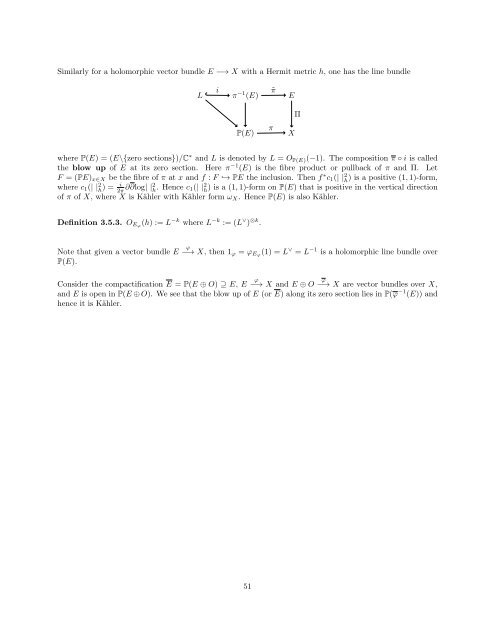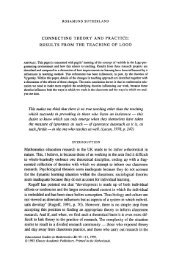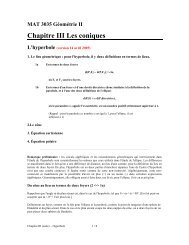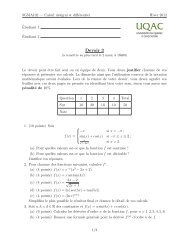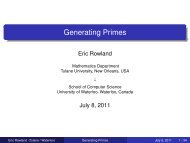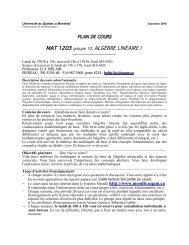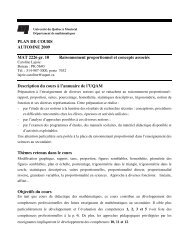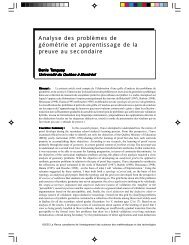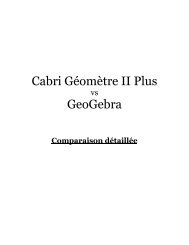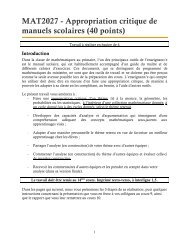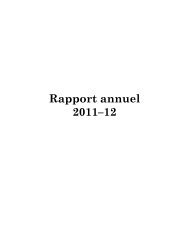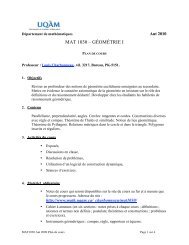COMPLEX GEOMETRY Course notes
COMPLEX GEOMETRY Course notes
COMPLEX GEOMETRY Course notes
Create successful ePaper yourself
Turn your PDF publications into a flip-book with our unique Google optimized e-Paper software.
Similarly for a holomorphic vector bundle E −→ X with a Hermit metric h, one has the line bundle<br />
i<br />
L π −1 ˜π<br />
(E) E<br />
P(E)<br />
π<br />
X<br />
Π<br />
where P(E) = (E\{zero sections})/C ∗ and L is denoted by L = O P(E) (−1). The composition π ◦ i is called<br />
the blow up of E at its zero section. Here π −1 (E) is the fibre product or pullback of π and Π. Let<br />
F = (PE) x∈X be the fibre of π at x and f : F ↩→ PE the inclusion. Then f ∗ c 1 (| | 2 h<br />
) is a positive (1, 1)-form,<br />
where c 1 (| | 2 h ) = i<br />
2π ∂∂log| |2 h . Hence c 1(| | 2 h<br />
) is a (1, 1)-form on P(E) that is positive in the vertical direction<br />
of π of X, where X is Kähler with Kähler form ω X . Hence P(E) is also Kähler.<br />
Definition 3.5.3. O Eϕ (h) := L −k where L −k := (L ∨ ) ⊗k .<br />
Note that given a vector bundle E −→ ϕ<br />
X, then 1 ϕ = ϕ Eϕ (1) = L ∨ = L −1 is a holomorphic line bundle over<br />
P(E).<br />
Consider the compactification E = P(E ⊕ O) ⊇ E, E −→ X and E ⊕ O −→ ϕ<br />
X are vector bundles over X,<br />
and E is open in P(E ⊕ O). We see that the blow up of E (or E) along its zero section lies in P(ϕ −1 (E)) and<br />
hence it is Kähler.<br />
ϕ<br />
51


